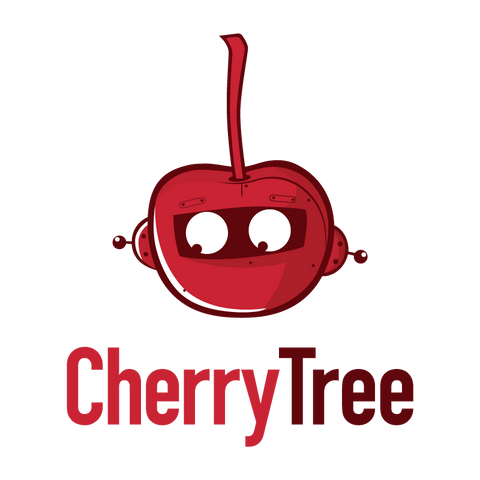NAS
What is NAS?
NAS (Network Attached Storage) is an intelligent storage device connected to your home or office network. You can store all your family and colleagues’ files on the NAS, from important documents to precious photos, music and video collections. By using a web browser or mobile apps, you can access files and use various services provided by the NAS via the Internet.
Why Your Family Needs a NAS
The number of our digital files keeps growing and they are scattered across different devices, platforms and services. To consolidate these files into one safe place, you need a secure and centralized storage solution.“But what about Dropbox, OneDrive...or a USB Stick? Doesn’t that solve all my storage needs?”
The major drawbacks of storing files on the public cloud are letting someone else hold all your personal files and high monthly subscription fees. The shortcomings of USB drives range from a lack of off-site access and automatic backup to portability that can lead to loss or damage. CherryNAS is the best alternative, and a necessity for the modern home.What CherryNAS Can Do For You

Automatically back up your PC and MAC or photo and videos from your iOS or Android device.
CherryNAS allows your family to sync files between a centralized NAS and their PC/Mac. And yes, if you are using a Mac, you can also back up your Mac to CherryNAS via Time Machine.
CherryNAS and MineOS, the ultimate self-hosted Minecraft server.

MineOS is a free plugin for TrueNAS CORE, the operating system of all CherryNAS Systems. MineOS is a perfect delivery system: a trimmed, yet supremely extensible server platform. Respun with MineOS components pre-configured, MineOS is the quickest way to get a managed hosting platform for Minecraft, capable of starting/stopping, backing up, restoring, and archiving your worlds.

Why Your Office Needs One
Businesses with 50 or fewer employees need to store ever-increasing amounts of data. They also require affordable solutions to back up data, share files, and collaborate on a single file at the same time.
“Can’t I just use a traditional file server and public cloud storage?”
Many begin by storing files on a traditional server, but when backup or collaboration issues arise, the server is quickly rendered inadequate. Others choose public cloud storage, which is convenient for collaboration but raises concerns about control of the data and costly subscription fees. CherryNAS can simplify your work and solve the above issues. Most of all, it’s easy to use and cost-effective.
What CherryNAS Can Do For Your Business
Next Generation File Server
Traditional file-sharing practices are fraught with inefficiency. Some businesses use email attachments to share files and eventually face file size limit and version control issues. CherryNAS, as an on-premises centralized storage device, can fulfill the needs of modern file sharing and collaboration.

Local and centralized back up
Backing up data scattered across PCs, servers, and VMs is always challenging - remote offices and employees can make things even more complicated. Active Backup for Business makes backup easy through a unified, intuitive console without license fees. For PC backup, it supports bare-metal recovery to restore the OS, settings, applications, and data; your employees can have instant, self-service recovery without bothering IT admins.
In-Depth
CherryNAS is designed around TrueNAS CORE. CORE is built on the powerful OpenZFS file system to keep data safe and secure while providing block, file, and object storage over a network to back up and share files, serve media, and many other data storage applications. With over ten million downloads and one million deployments, TrueNAS CORE is the world’s most popular software-defined storage.
Highlights
Block, File, Object Storage
Self-Healing OpenZFS File System safeguards data
Easy to Use UI
Built-in RAID Protection & Volume Manager
Unlimited Snapshots and Clones
Data Compression & Thick/Thin Provisioning
LDAP & Active Directory Integration
Plugins enable enhanced capabilities (media server, etc)
Leverages DRAM & flash for performance
Community-Supported
RAID Z
The ZFS filesystem provides RAID-Z, a data/parity distribution scheme similar to RAID 5, but using dynamic stripe width: every block is its own RAID stripe, regardless of block size, resulting in every RAID-Z write being a full-stripe write. This, when combined with the copy-on-write transactional semantics of ZFS, eliminates the write hole error. RAID-Z is also faster than traditional RAID 5 because it does not need to perform the usual read-modify-write sequence. RAID-Z does not require any special hardware, such as NVRAM for reliability, or write buffering for performance.
Given the dynamic nature of RAID-Z's stripe width, RAID-Z reconstruction must traverse the filesystem metadata to determine the actual RAID-Z geometry. This would be impossible if the filesystem and the RAID array were separate products, whereas it becomes feasible when there is an integrated view of the logical and physical structure of the data. Going through the metadata means that ZFS can validate every block against its 256-bit checksum as it goes, whereas traditional RAID products usually cannot do this.
In addition to handling whole-disk failures, RAID-Z can also detect and correct silent data corruption, offering "self-healing data": when reading a RAID-Z block, ZFS compares it against its checksum, and if the data disks did not return the right answer, ZFS reads the parity and then figures out which disk returned bad data. Then, it repairs the damaged data and returns good data to the requestor.
There are five different RAID-Z modes: RAID-Z0 (similar to RAID 0, offers no redundancy), RAID-Z1 (similar to RAID 5, allows one disk to fail), RAID-Z2 (similar to RAID 6, allows two disks to fail), RAID-Z3 (a RAID 7 [a] configuration, allows three disks to fail), and mirror (similar to RAID 1, allows all but one of the disks to fail).


